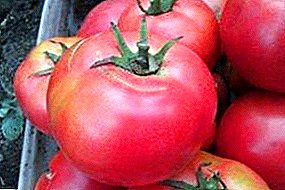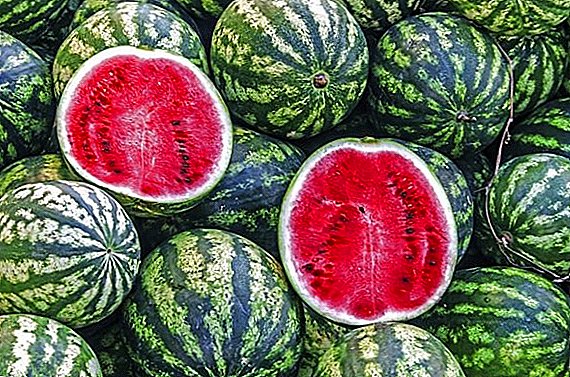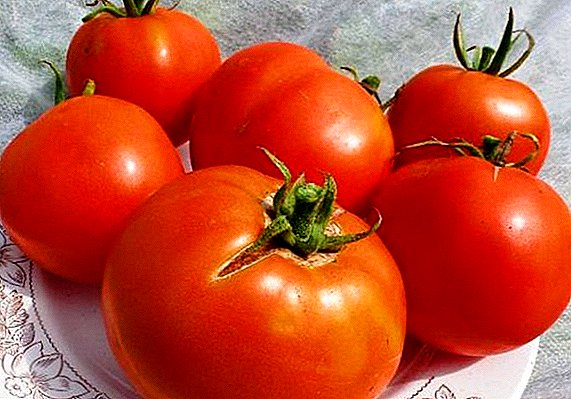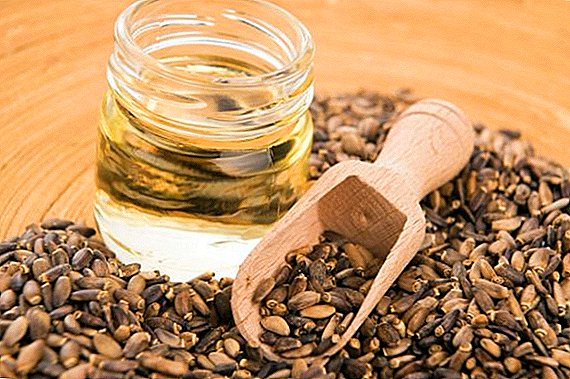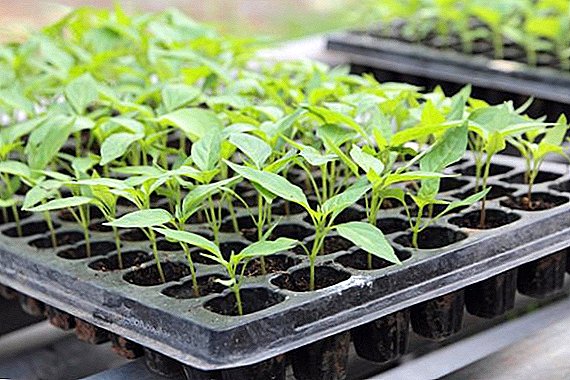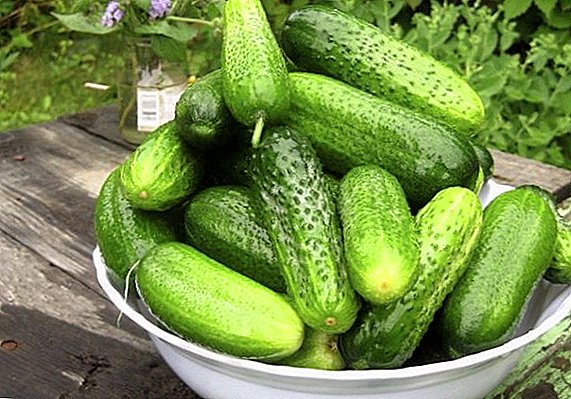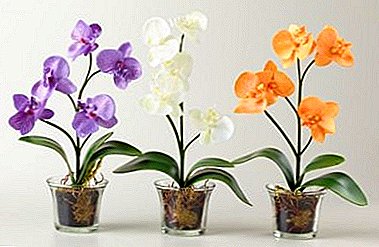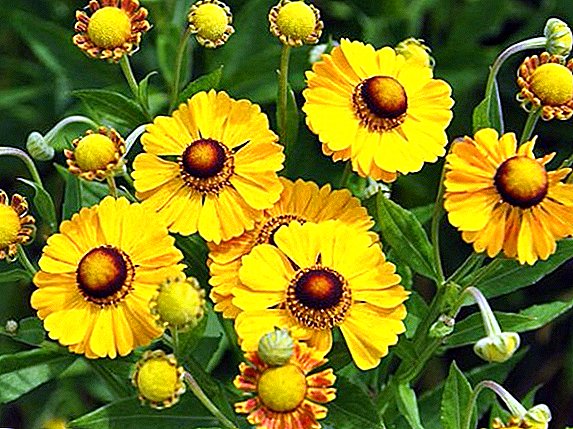 Gelenium has a rather extensive characteristic. This plant is a representative of the Compositae family and has been found in culture since 1635. However, the flower was first described in the work of Karl Linnaeus in 1755. All plants of this species can have completely different height of the bush, and depending on the variety, it varies from 30 to 150 cm. The colors are always made in warm colors and can be either single-color or two-color or even variegated. Lanceolate leaves.
Gelenium has a rather extensive characteristic. This plant is a representative of the Compositae family and has been found in culture since 1635. However, the flower was first described in the work of Karl Linnaeus in 1755. All plants of this species can have completely different height of the bush, and depending on the variety, it varies from 30 to 150 cm. The colors are always made in warm colors and can be either single-color or two-color or even variegated. Lanceolate leaves.
The most widespread gelenium received in North and Central America. Now in the world there are about 30 types of perennial gelenium, the cultivation of which does not amount to special difficulties.
Did you know? People believe that the plant acquired its name in honor of the wife Menelaus - Helena, which caused discord and war between Troy and Greece.
Growing gelenium from seeds
Gelenium is an excellent solution for those who want to decorate their garden with flowers of autumn color at the time when most plants have already blossomed (this is especially important if you consider that growing a flower from seeds is simple, although it is not very popular among florists).
 The reason for the rather low interest in plant breeding lies in the fact that during the reproduction of helenium seeds lose its varietal characteristicsthat is often a significant disadvantage. As for the question “When to plant gelenium seeds?”, Here first of all it is necessary to decide how exactly you will grow gelenium: sowing seeds for growing seedlings, or sowing seeds in open ground. When grown by the seedling method, the time for sowing seeds is the end of February or the beginning of March, and when sowing seeds in open ground is early spring. On how to properly propagate gelenium seed method, we'll talk further.
The reason for the rather low interest in plant breeding lies in the fact that during the reproduction of helenium seeds lose its varietal characteristicsthat is often a significant disadvantage. As for the question “When to plant gelenium seeds?”, Here first of all it is necessary to decide how exactly you will grow gelenium: sowing seeds for growing seedlings, or sowing seeds in open ground. When grown by the seedling method, the time for sowing seeds is the end of February or the beginning of March, and when sowing seeds in open ground is early spring. On how to properly propagate gelenium seed method, we'll talk further.
Sowing seeds for seedlings
Before sowing seeds for seedlings, it is necessary to stratify them. This process lasts from 1 to 1.5 months. In the planting container, it is necessary to sow the seeds and moisten the soil, then cover with a film and put it away in a cold, dark place (a refrigerator is best for this purpose) for 6 weeks. After one and a half months, the container with seeds must be moved to a warm place, the temperature of which is kept at + 18 ... + 22 ° C. Seeds should be under artificial lighting (fluorescent lamp will be the best option). When the stalks appear on 2-3 real, well-developed leaflets, the seedlings can be planted in separate cups.
Important! Replant seedlings from tankand need not clearing the root of the groundin which the plant used to grow.
 When planting seedlings in open ground (preferably in May, when the earth is already warm), the depth of the planting pit should be two to three times greater than the size of the earth coma. Before planting, the roots of the plant must be thoroughly soaked and placed at a distance of 25-30 cm from each other. After planting the beds are mulched with peat or humus.
When planting seedlings in open ground (preferably in May, when the earth is already warm), the depth of the planting pit should be two to three times greater than the size of the earth coma. Before planting, the roots of the plant must be thoroughly soaked and placed at a distance of 25-30 cm from each other. After planting the beds are mulched with peat or humus.Growing gelenium seedlings method will not bring you flowering in the first season, so you should be patient and wait for flowers for another year.
Sowing seeds directly in open ground
If you do not have the time or the ability to germinate seeds for a seedling method of reproduction, you can sow the helenium directly into open ground. Preliminary work for this procedure does not require much effort. You just need to dig a place for planting and slightly fertilize it with humus, manure or tof, be sure to stratify the seeds. It is better to start this procedure in advance, because on average its duration is about a month. When stratification is carried out, the seeds in a separate container are mixed with wet sawdust and left in the refrigerator (or in another cold dark place) for a month. After that, the seed material is ready for sowing into the soil.
Did you know? The faster after harvesting to stratify and sow the seeds, the higher the quality of the seedlings.
 In the ground, you need to make grooves, or pits, a depth of 3-5 cm and sow in them the seeds. The distance between such rows / pits should be at least 25 cm. Sowed seeds should be mulched with peat or humus, which will protect plants from temperature extremes and frost. You will notice the first shoots in 2-3 weeks.
In the ground, you need to make grooves, or pits, a depth of 3-5 cm and sow in them the seeds. The distance between such rows / pits should be at least 25 cm. Sowed seeds should be mulched with peat or humus, which will protect plants from temperature extremes and frost. You will notice the first shoots in 2-3 weeks.Choosing a place for growing gelenium
Gelenium has a very decorative appearance and the main task in growing a flower is to preserve it, therefore planting and caring for this plant should be carried out in compliance with some rules, the first of which is a good choice of a place for planting a flower. To gelenium felt comfortable it is better to place on a warm, well-lit area. However, the plant will not die in the shade or partial shade, although the abundance of flowering may be reduced.
The combination of gelenium with other plants
Gehlenium in the landscape design can not just be an integral part of the composition but also decorate your garden "individually". For example, tall heleniums are excellent for single landings against the general background of the plot. In addition, tall varieties are well suited to decorate fences, or create "hedges".  If you grow undersized varieties, they can be used for decorating borders and garden paths. When breeding tall and short geleniums, they can be combined with roses, chrysanthemums and bells. Together, these flowers will create a wonderful ensemble of grace and simplicity. Low-growing varieties look great in the company with forget-me-nots: the combination of warm and cold hues will add a bit of mystery to the design.
If you grow undersized varieties, they can be used for decorating borders and garden paths. When breeding tall and short geleniums, they can be combined with roses, chrysanthemums and bells. Together, these flowers will create a wonderful ensemble of grace and simplicity. Low-growing varieties look great in the company with forget-me-nots: the combination of warm and cold hues will add a bit of mystery to the design.
Did you know? The cut gelenium buds do not bloom in water, which should be taken into account when setting decorations.
How to care for gelenium in open ground
Caring for gelenium does not require much effort or material investment. It is enough to do everything on time, carefully adhering to the basic requirements, and then your flower will decorate the garden for a long time.
Correct watering
 The main thing you need to know when growing gelenium is that it does not tolerate too dry soil. Therefore, when watering, it is necessary to take into account the natural conditions of gelenium growth and, in particularly dry times, to conduct fairly frequent and abundant watering. However, at the same time, it is not necessary to allow stagnation of water in the soil, which will help avoid root decay.
The main thing you need to know when growing gelenium is that it does not tolerate too dry soil. Therefore, when watering, it is necessary to take into account the natural conditions of gelenium growth and, in particularly dry times, to conduct fairly frequent and abundant watering. However, at the same time, it is not necessary to allow stagnation of water in the soil, which will help avoid root decay.
Important! For gelenium recommend using drip irrigation method.To prevent stagnation of water in the soil will help timely loosening of the soil. It is advisable to carry out this procedure immediately after watering, so that oxygen also enters the roots of the plant, along with moisture. Weeding is also needed by the plant, and it should be carried out 3-4 times per season, because weeds deplete the soil and absorb moisture. To avoid the appearance of a large amount of weed grass, each time you loosen the land, you need to pour a layer of mulch under the bush, the role of which is perfectly suited for peat or humus.
How often and how to conduct dressing
Gelenium, like any other garden plant, needs additional nutrients.
Fertilizer for gelenium need in 3 stages:
- the first time dressing is carried out in the first decade of May, when the green part of the plant begins to actively develop (at this time you can use urea or any liquid complex fertilizer, and from the organic matter suitable infusion of mullein);
- the second time, the helenium needs to be fed to stimulate flowering (it is best to use such a liquid: add 10 liters of water per 10 liters of water, 1 tbsp of Agricola-7 and 1 tbsp of Agricola-fantasy);
- the third time the plant is fed to help it "get stronger" before wintering (in this case, fertilizer based on superphosphate and potassium sulfate should be applied).

Did you know? "Overfeeding" the plant can not, because it will cause an active growth of green mass, whereas flowering will be less abundant.
Pruning inflorescences
 Pruning inflorescences is not needed to form a bush, but in order to improve the quality of flowering. To this end, cut a few inflorescences and shoots, but delete them all is not worth it. It is enough to cut the inflorescences of the youngest branches. Another trick: if you remove those buds that have already bloomed, then new flowers will form in their place.
Pruning inflorescences is not needed to form a bush, but in order to improve the quality of flowering. To this end, cut a few inflorescences and shoots, but delete them all is not worth it. It is enough to cut the inflorescences of the youngest branches. Another trick: if you remove those buds that have already bloomed, then new flowers will form in their place.
Important! If you want to make the cust more branched, just pinch the tops of it.
How to deal with pests and diseases of gelenium
Despite the fact that the gelenium grows in open ground, it is quite resistant to all sorts of diseases and pests. However, the most dangerous for the plant is the chrysanthemum nematode - a disease whose presence is marked by the appearance of brown spots on the leaves and buds, and over time the hilinium loses its ability to bloom. If you notice this problem on one plant, then you need to handle all geleniums. To do this, they are poured hot (up to +50 ° C) with water, and the ground around the bush sprinkled with lime or sulfur.
 Another disease that often manifests itself in gelenium is rot. To avoid it, it is necessary to follow the rules of watering very clearly, and if the problem is already there, you can eliminate it by loosening the soil and treating the plant with fungicides.
Another disease that often manifests itself in gelenium is rot. To avoid it, it is necessary to follow the rules of watering very clearly, and if the problem is already there, you can eliminate it by loosening the soil and treating the plant with fungicides.
As for insects, they can be easily destroyed by treating the plant with soapy water (in the early stages) or with insecticides (during a massive “attack”).
Important! The main a step in the prevention of diseases and the appearance of pests is timely weeding, as well as cleaning fallen leaves from under the bush, because most bacteria and insects live in weeds and fallen leaves.
When to collect and how to store gelenium seeds
If you decide to prepare seeds for breeding gelenium, collecting them from your flowers, then you need to do it quite quickly, because during the torrential autumn rains they simply rot. Dark reed and tubular flowers that are already black by the time the seeds are ready will “tell” you about the degree of readiness of the seed material for harvesting. It is best to store the seeds in a linen bag, after placing them in a dry place. It is advisable to hang the bundle as high as possible, or put it on the shelf so that it cannot get to the mouse.
Despite the fact that helenium seeds are easy to find in modern stores, they can be easily collected by yourself. However, most breeders tend to vegetative flower propagation methods, because germination of seeds is not high enough, as well as the safety of "parental" traits.
Wintering gelenium
 So that you can enjoy the flowering of your gelenium and after winter, the flower must be properly prepared. The stems of helenium are cut so that no more than 10 cm can be seen from the ground. The beds on which the gelenium grows need to be mulled with sawdust, peat or humus, putting a layer of mulch at least 5 cm. If you live in a little snowy region, then you also need to cover the flowers with lutrasil, which instead of snow protects the plant from frost.
So that you can enjoy the flowering of your gelenium and after winter, the flower must be properly prepared. The stems of helenium are cut so that no more than 10 cm can be seen from the ground. The beds on which the gelenium grows need to be mulled with sawdust, peat or humus, putting a layer of mulch at least 5 cm. If you live in a little snowy region, then you also need to cover the flowers with lutrasil, which instead of snow protects the plant from frost.
Transplanting and dividing gelenium bushes
Many gardeners, growing gelenium, are concerned with the question: "When to replant the flower?". It is necessary to perform this procedure once every three years, since this is the most reasonable time for a sufficient number of young shoots to form and for the buds of the flower not to “get out” to the surface of the soil. The division of the helenium bushes is much easier to accomplish than to perform the same task for any other perennial, because as a growing bush itself is divided into sockets. It will not be difficult to separate it from the mother bush: the plant is dug out of the ground and gently cleaned from adhering soil, trying not to damage the root system. Then, in places where the bush is divided, the cut is made with a sharp tool, immediately lubricating the cut with coal or treating with garden decoction, after which the gelenium is planted in the ground.
Cultivated types of gelenium
Of the currently known 30 species of the described plant, only a few of them are actively grown in gardens, each with its own advantages. In more detail about the most popular grades we will talk further.
Gelenium Bigelow
Gelenium Bigelow (Helenium bigelovii) - is less common than all others. The homeland of this variety is considered the western part of North America, where the plant reaches up to 80 cm in height. The leaves of this species are lanceolate, whole. The inflorescences are quite large - up to 6 cm in diameter. The tubular flowers are brown and the reed flowers are bright yellow. This variety begins its flowering in June, and it continues until July. 
Gelenium Spring
Helenium Spring (Helenium vernalis) - a perennial herb that reaches a height of 1 meter. The leaves are lanceolate, whole, oval-shaped, saturated green color. Flowers are quite large, up to 7 cm in diameter. The reed flowers are bright orange and the tubular flowers are brown. Flowering begins earlier than the "Bigelow" (from mid-May) and lasts until the end of June. 
Did you know? Gelenium "Spring" - perfectly suited even for Siberia due to its high frost resistance.
Gehlenium Gupesa
Helenium Gupesa (Helenium hoopesii) - a tall herb, reaching 90 cm in height. Leaves are gray-green lanceolate, whole. On a long peduncle is a single inflorescence of bright yellow color, up to 9 cm in diameter. The bloom lasts for a month: from June to July. 
Gelenium Autumn
Gelenium Autumn (Helenium autumnale) - a species that is most appreciated by breeders, and above all, for a large number of varieties. Lignified stems of this species reach 160 cm in height. The leaves are small in size, "decorated" by the grayskins. The inflorescences in the diameter can reach 30 cm. The tubular flowers have a rich yellow color, and the reed flowers have a yellow color (a lighter shade) and are complemented by a reddish tinge. 
Important! This species blooms for two months: from July to September.
Gelenium hybrid
Helenium hybrid (Helenium x hybridum) - a team of all "illiquid" varieties of helenium. The only link between them is the original form - Autumn Helenium.  As you can see, every gardener can find a variety of gelenium "to his liking." Growing flowers is very simple, and their appearance is a complex combination of refined form, simplicity of wild flowers and the color of the sun. Geleniums will be a great addition to any landscape design and will delight you for many years. It is enough to put a drop of love and care in the flowers.
As you can see, every gardener can find a variety of gelenium "to his liking." Growing flowers is very simple, and their appearance is a complex combination of refined form, simplicity of wild flowers and the color of the sun. Geleniums will be a great addition to any landscape design and will delight you for many years. It is enough to put a drop of love and care in the flowers.


